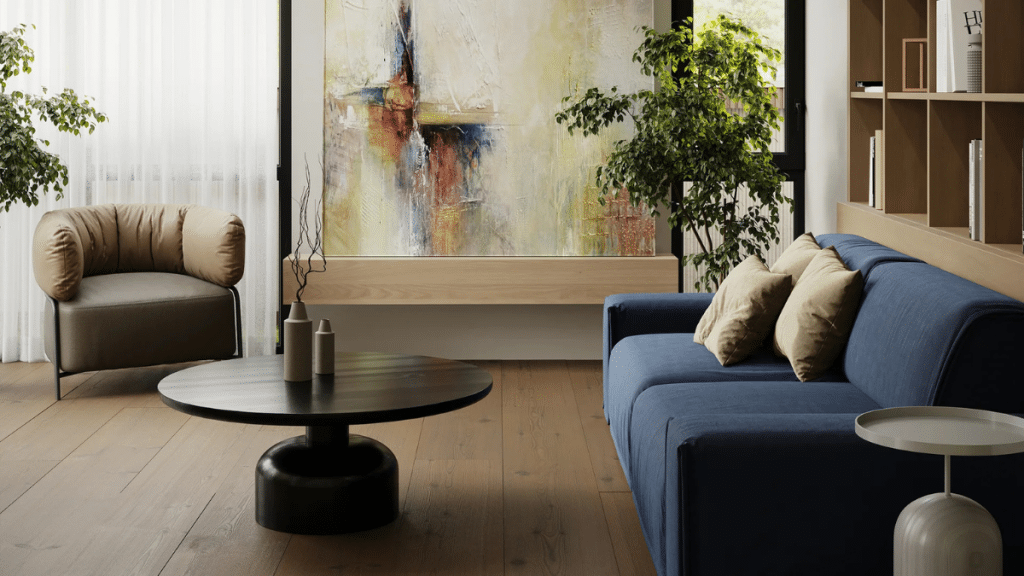3D interior visualization has emerged as a pivotal tool in transforming the way design concepts are communicated and refined. This technology offers a window into a space before it is built, enabling clients and designers to explore ideas with remarkable clarity. Enhanced communication and improved design accuracy are two fundamental benefits that drive the adoption of these advanced visualization techniques.
Enhancing Client Communication
Digital interior visualization creates an immersive experience that bridges the gap between abstract ideas and tangible design elements. By transforming sketches and plans into realistic, three-dimensional representations, misunderstandings are minimized and client expectations become more aligned with the final outcome. Detailed visualizations enable clear discussion of layout, lighting, and material choices, which significantly smooths the approval process. Interested parties can read the full article for additional insights into how these digital tools are reshaping design communication.
Benefits of Improved Communication
- Clarity: Realistic images provide a clear vision of the proposed space.
- Engagement: Interactive models invite clients to explore design options actively.
- Collaboration: Detailed visuals foster a more productive dialogue between designers and clients.
- Efficiency: Clear communication reduces the number of revisions needed during the project cycle.
As Walt Disney once said, “If you can dream it, you can do it,” a sentiment that resonates with the creative potential unlocked by 3D visualization.
Boosting Design Accuracy
Accurate representation is critical in interior design, where every detail counts. Advanced 3D visualization tools allow for meticulous examination of spatial relationships, material textures, and color schemes, ensuring that every design element is rendered with precision. Recent studies have indicated that projects utilizing 3D visualization see a 40% improvement in design accuracy and a 50% enhancement in client satisfaction. This precision not only elevates the quality of design presentations but also reduces costly revisions during later stages of development.
Key Elements That Drive Accuracy
- Detailed Modeling: Digital models capture every nuance of a space, from intricate textures to precise lighting conditions.
- Real-Time Adjustments: Designers can quickly modify elements and instantly see the results, enabling rapid iteration.
- Data-Driven Decisions: Integration of accurate measurements and material properties helps in making informed choices.
- Consistency: Maintaining a unified visual standard throughout the project ensures design integrity.
Frank Lloyd Wright’s belief that “form and function are one” is embodied in these practices, where accuracy in design directly translates to functional and aesthetically pleasing interiors.
Implementing 3D Visualization in Projects
Adopting 3D interior visualization involves a systematic process that integrates seamlessly with traditional design workflows. A structured approach ensures that the benefits of digital visualization are fully realized while maintaining efficiency throughout the project lifecycle.
A Step-by-Step Approach
- Conceptualization: Start with initial sketches and mood boards that outline the design vision.
- Digital Model Creation: Convert these ideas into detailed 3D models using state-of-the-art software.
- Collaborative Review: Engage clients and design teams in reviewing the models and providing feedback.
- Final Adjustments: Refine the design based on feedback to ensure accuracy and alignment with client expectations.
- Presentation: Deliver photorealistic images and virtual tours that clearly communicate the final design.
The process not only improves communication but also ensures that every design decision is carefully considered and accurately implemented.
Embracing 3D interior visualization leads to spaces that truly reflect the client’s vision while adhering to the highest standards of design accuracy. With digital tools enabling enhanced communication and precision, the future of interior design is not only visually compelling but also exceptionally efficient.
